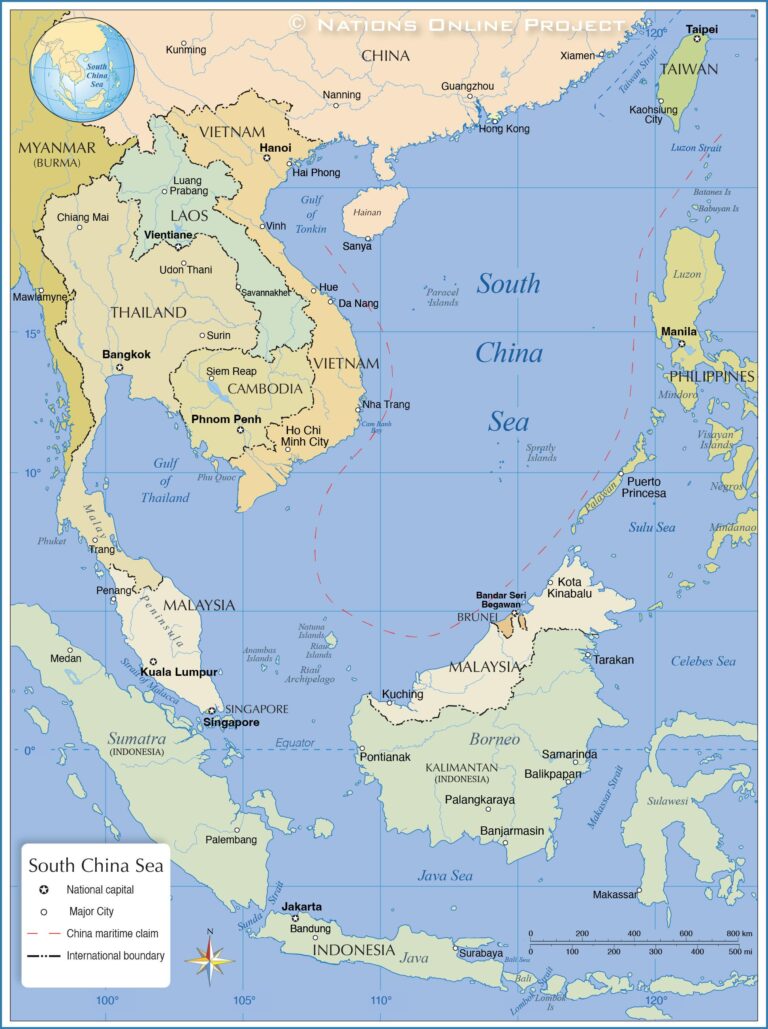Overview
As tensions rise in one of the globe’s most strategically significant maritime regions,recent confrontations in the South China sea have brought to light the increasingly strained relations among neighboring nations. This body of water, abundant in natural resources and essential for international shipping routes, has long been a site of contention. However, recent incidents have heightened worries regarding maritime sovereignty and geopolitical stability. With China intensifying its claims amid a growing U.S. military presence and support for Southeast Asian allies, the region finds itself at a critical juncture. This article explores the factors fueling these rising tensions while assessing thier implications for regional security and global trade dynamics, as well as examining the hurdles faced by diplomatic initiatives aimed at resolving these disputes.
Understanding the Root Causes of South China sea Tensions
The current surge in disputes within the South China Sea stems from complex issues that go beyond mere territorial claims. A significant factor is geopolitical competition, as countries strive to assert their influence over this vital area crucial for global trade routes. With approximately $3.4 trillion worth of goods transiting through these waters each year, it is unsurprising that nations like China, Vietnam, and the Philippines are keen to establish their presence here. The interplay between national pride and economic interests often drives smaller nations to confront larger powers directly,illustrating the intricate nature of these conflicts.
The significance of fishing rights, access to natural resources, and concerns about national security also play pivotal roles in escalating tensions. The contested waters are rich with oil and natural gas reserves that attract considerable interest from various stakeholders. As an example, consider this updated table showcasing different countries’ claims:
| Country | Claim Type | Main Interests | ||||||||||
|---|---|---|---|---|---|---|---|---|---|---|---|---|
| China | Cultural historical rights | Territorial expansion; resource extraction efforts. | ||||||||||
| Vietnam | Sovereign Exclusive Economic Zone (EEZ) | sustainable fishing practices; oil exploration activities. | ||||||||||
| Philippines | International legal frameworks | Maritime safety; resource management strategies. This multifaceted tension not only threatens regional stability but also invites involvement from global powers—complicating efforts toward peaceful resolutions further still. The alignment between economic necessities and issues surrounding sovereignty continues to stoke hostilities while making consensus increasingly elusive amidst rising nationalist sentiments. The Influence of major Nations on recent Conflicts
<
The intensifying situation in the South China Sea highlights a complicated web of regional power dynamics where major players assert their strategic interests vigorously.China , bolstered by enhanced military capabilities alongside ambitious territorial aspirations , has adopted an increasingly aggressive posture—conducting extensive military exercises while constructing artificial islands to reinforce its foothold . In contrast ,the United States , along with allies such as Japan & Australia , has taken decisive action against China’s expansionism through freedom-of-navigation operations . This not only escalates military posturing but also sharpens international diplomatic focus on establishing stable frameworks for conflict resolution .
|




